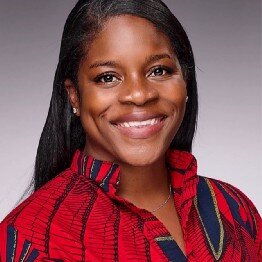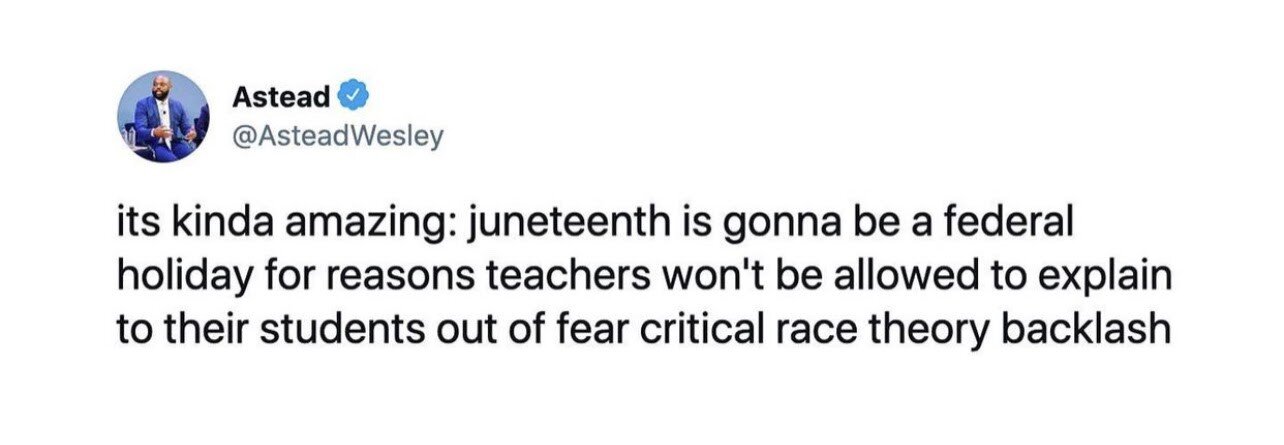The role of educators as liberators
.jpeg)
Michelle Odemwingie, ANet’s incoming CEO
This week as we celebrate Juneteenth, I have been reflecting on Black Liberation; where we are, where we aren’t. Over the past several years, it has been inspiring to see more schools and districts across the country committing to anti-racism and understanding their role in advancing racial equity.
Unfortunately, in alignment with historical patterns, moments of racial progress are often overshadowed and intentionally undermined. Today, conversations around race in K-12 education are currently centered on the false debate over Critical Race Theory. They are actively working to erode the progress we have made to honor student identity in our instructional practices.

While the current conversation on CRT is centered around what students are or are not being taught, it misses a more critical question:
What is being taught to those who teach?
The student population of American schools is more diverse than ever. Yet, at both the elementary and secondary level, the teaching population is more white and more female, a trend that doesn’t appear to be slowing down. Years of research continue to affirm the positive impact a diverse teaching staff has on ALL students. But what’s more frightening is the negative consequences of a white-dominant teaching staff uninformed and ill-equipped to create safe, liberatory learning spaces for their diverse student population.

Educators of racially marginalized children must analyze and critique the system around us. We must all actively learn about how students’ identities, specifically their racial identity, impact how they experience school. We must also be prepared to counteract the pervasive racist practices happening in school systems and classrooms. Through daily choices, we have opportunities to either intentionally work against racial oppression in our work or perpetuate it.
We cannot push students to the highest reaches of what education can provide without creating a space where they can thrive.
There is a glaring gap in opportunity and access for black children that is not just a figment of the past. It is a harsh reality for too many of our students, and it has dire consequences for their life outcomes.
As a black educator, I have engaged in my own journey of understanding race and how it showed up in elements of my instruction and permeated the school systems I have worked in and partnered alongside. I have taken a path that began with deepening my awareness, prioritizing community conversations, and — most importantly — constant reflection. Here is a roadmap for educators of black children to begin their racially conscious journey of self-understanding and growth.
Awareness and Acknowledgement
James Clear once said, “We don’t rise to our highest goals; we fall to our most broken systems.” The racial disparities in our education system are all around us if we care enough to pay attention. Resistance to identifying the most broken areas has resulted in our inability to serve our students well. Even worse yet, we too often place the burden and the blame on the students instead of the system that is failing them.
Practicing awareness and acknowledgment can have various entry points; for some, it is through looking at the racial disparity data across access, advanced courses, and disciplinary data. For others, hearing directly from students about their lived experiences with the adults in their schools can be critical perspective building. Our professional responsibility is to dig deeper to understand why on the surface, race-blind policies and practices result in predictable and compounding negative outcomes for our most vulnerable students. That premise of examination is at the heart of Critical Race Theory. This orientation towards critical inquiry is imperative if we want to disrupt the status quo for our students.
Community Conversations
Understanding these barriers is a group effort beginning with uplifting student voices. Create community space to reflect and discuss the realities of the system with students and teacher teams. By engaging in a candid dialogue of how students experience the classroom space through identity, possibilities open up for deeper learning. Here are some powerful prompts I’ve engaged in with peer educators that have pushed me:
-
How have I enjoyed privilege over other groups, especially those that I serve in my school?
-
Are our lessons designed to teach students what we know or empower them to explore and expand their knowledge? What are the cultural implications of this when we look at the racial demographics of our staff compared to our students?
-
In an average lesson or school day, how many times do my students experience instructional and social affirmation on who they are?
-
What groups of students are centered on more than others? Where are we unconsciously perpetuating marginalization by failing to center on underrepresented and underserved students?
-
What narratives am I consciously or unconsciously sharing with my students about the value of who they are and their community through the content I teach and the comments I make?
-
What discomfort do I experience when conversations around race come up? What does racial dialogue trigger for me about my own identity, privilege, or lived experiences? How is that discomfort manifesting itself physically or emotionally? What can I do to notice, name, and move forward to benefit the students and community I serve?
Continued Self-Reflection
Lastly, the biggest lesson I have learned is that this work requires ongoing personal reflection. Understanding what it really means to teach black students well cannot be achieved in attending a single DEI session or reading the book on “White Fragility” with a book club. If we are to actively facilitate the learning of our young people in ways that honor who they are, we must spend time together examining who we are as individuals and how we show up consciously and unconsciously for young people.
We all have to build the muscle to notice and address different assumptions, biases, and dominant norms that anchor the way we view schooling. Oftentimes, in my own work, these don’t, on the surface, appear anti-black, but their presence in professional practice can actively limit the learning and development of our black students. Unconscious teacher bias and the negative consequences it has for students have been heavily researched and well-documented. Study after study after study continues to affirm that individual teachers' racial and gender bias matters more than student identity when it comes to learning outcomes.
To address our own individual bias, we are first able to be honest with ourselves. You are not color-blind; because no one truly is. Take caution against three dangerous reflections I hear in my work with teachers and educators across the country: “Well, this is how we’ve always done it,” “this is how I was taught,” “that won’t work for these kids.”
Those limiting thoughts in our “default” often signal individual bias. This shows up most when we are asked to learn and grow for our students, and we’ve reached a point of productive discomfort, which is necessary for inclusive practice.
At their best, educators allow students to discover new possibilities, tackle challenges, and develop talent. It is liberatory work. In this moment, we must ensure supporting black students will look like more than a federal holiday. We need learning spaces that see and honor who they are and empower them with the knowledge and skills to create a more equal and just world.
Michelle is the incoming CEO at the Achievement Network and is committed to supporting educators achieve racial equity in their schools.
